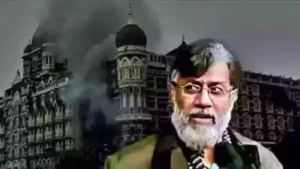UPSC Relevance

GS-3: Internal Security – Terrorism, Extradition Processes, Role of National Investigation Agency (NIA)
GS-2: International Relations – India-U.S. Ties, India-Pakistan Dynamics, Legal Collaboration
Key Points: Extradition Tied to 26/11 Mumbai Attacks
- Tahawwur Hussain Rana, a Canadian-American of Pakistani descent, was extradited from the United States and detained by the NIA for his alleged involvement in the 2008 Mumbai terror attacks.
- He appeared before a Special NIA judge in Delhi, with custody decisions still pending.
Timeline of Events
- November 11, 2009: NIA registers the case.
- December 24, 2011: Chargesheet submitted against Rana and co-accused.
- December 4, 2019: India formally requests Rana’s extradition.
- May 16, 2023: U.S. court grants extradition approval.
- April 10, 2025: Rana arrives in Delhi for legal proceedings.
Security Arrangements & Political Responses
- Robust security measures, including SWAT teams and armored vehicles, were deployed around Patiala House Court.
- Political tensions emerged between BJP and Congress:
- BJP highlighted the extradition as evidence of PM Modi’s “zero-tolerance” approach to terrorism.
- Congress claimed the foundation for the case was established during the UPA government.
Diplomatic and Legal Dimensions
- Pakistan denies any connection, noting Rana’s Canadian citizenship and lack of renewed Pakistani ties.
- Extensive diplomatic efforts with the U.S. were necessary to navigate legal obstacles for extradition.
Connection to David Headley & LeT
- Rana is allegedly linked to David Headley, a Lashkar-e-Taiba (LeT) operative who conducted reconnaissance for the Mumbai attacks.
Analysis & Next Steps
- The extradition marks a significant milestone in India-U.S. counter-terrorism collaboration.
- It underscores the importance of strengthened legal frameworks, faster extradition treaty processes, and global cooperation to tackle cross-border terrorism.




